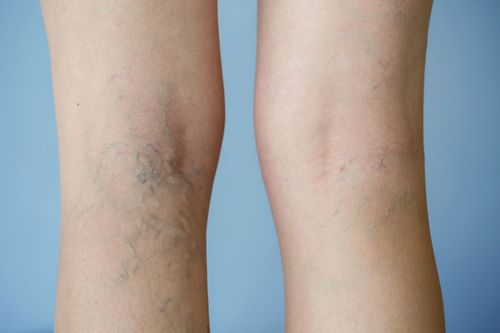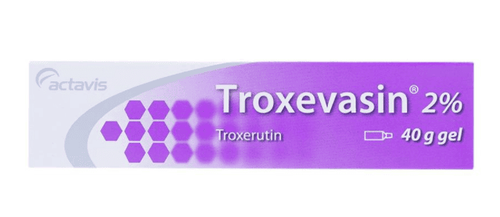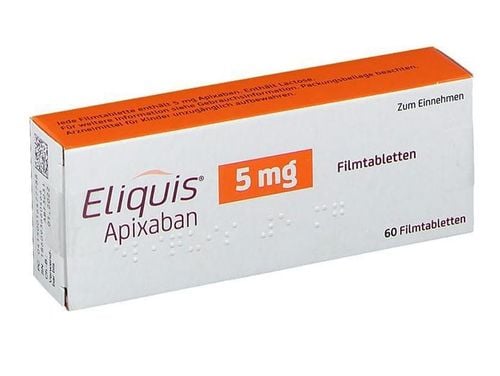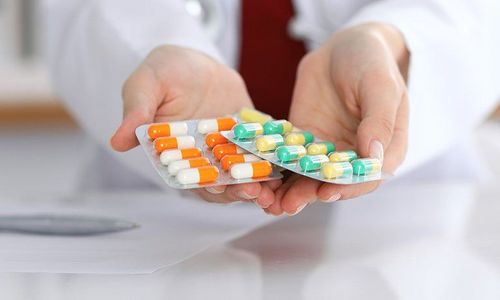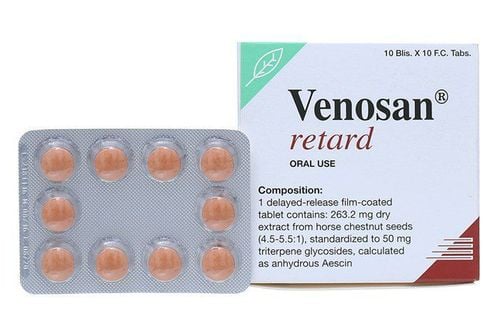This is an automatically translated article.
For most people, swelling of blood vessels in the hand is normal and only cosmetically affected. But for some people, swollen veins are a symptom of a larger problem. Let's find out the following article to see if swollen blood vessels in the hands is a disease and is it dangerous.

Sưng mạch máu ở tay có nguy hiểm không?
1. What causes swollen blood vessels in the hands?
You've noticed recently that your hands have prominent tendons, larger-than-normal blood vessels, and even swelling. Conspicuous hand veins are actually normal - at least in most cases. Their function is simply to return blood from the hands to the heart. Veins may show up more or less on one person to another. Certain conditions can make your veins more prominent such as hot temperatures, exercise, tight clothing, and sun damage. In most cases, their appearance on the hands is a cosmetic problem or a medical condition such as vascular disease.
The causes of this condition can be due to:
Aging: We all inevitably get older, along with that, the skin becomes thinner and less elastic, so it is less able to hide the wrinkles. veins beneath the skin, so swollen veins are easy to see. Low body fat: Although many people have fat loss goals to achieve their preferred aesthetic, doing so can produce other cosmetic changes. With less fat covering and plumping the skin around the veins, you may see them protrude more above the skin's surface. This not only happens on the hands but also notices it on the arms, abs and other body parts. Hot weather: Heat can play a role in why your veins are so prominent. As the temperature rises, the veins dilate and widen. This dilation puts extra stress on the vein wall and can lead to pain or cramping. When a hematoma develops under the skin due to hot weather, you may notice swelling of the blood vessels in the hand, and the blue veins that look like ropes on the hand. Genetics: You may notice other people in your family have ridges on their hands in a similar way. If this is the case, the veins are not a sign of a health concern, but you can opt for a cosmetic procedure to reduce the appearance. Varicose veins: Varicose veins are a sign of blood vessels not working properly. Spider veins and varicose veins can appear on any part of the body where blood flow is interrupted or vein walls and striations are damaged, including the hands. In this case, you may be facing a health problem and should seek advice from a vascular surgeon. Exercise: When you exercise, your blood pressure increases and your veins are pushed closer to your skin. Once your blood pressure drops to normal, the arm veins become less prominent. However, regular exercise can permanently bulge your arm veins — especially if you do a lot of resistance training. Superficial thrombophlebitis: Veins can swell near the surface of the skin and this is called superficial thrombophlebitis. This appearance is another health concern, but it is not usually dangerous, just painful. This phlebitis is often associated with other health conditions such as an autoimmune disorder, infection, or another type of injury. Sometimes, a blood clot can be the cause. Blood clots can form with prolonged IV (intravenous drip) use. Phlebitis: If a hand infection, injury, or autoimmune disease causes a vein to become inflamed, the vein can swell. Deep vein thrombosis (DVT): Swollen arm veins can be the result of a blood clot located deep in the arm vein. Other causes: Habit of sleeping on the arms or often wearing tight-fitting shirts; changes in a woman's hormones during pregnancy or perimenopause; Unbalanced nutrition, lack of substances, especially fiber, vitamins C, E and not drinking enough water will also affect veins.
2. Treatment of swollen blood vessels in the hands
Thanks to modern technology, the treatment of swollen veins has become easier. Treatment for swollen hand veins depends on the cause of the condition. Once the doctor makes an accurate diagnosis, treatment can be determined and started.
In most cases, the treatment of varicose veins is related to aesthetics rather than health. The cosmetic treatments are essentially the same as those for varicose veins:
Sclerotherapy is a minimally invasive procedure that involves the injection of saline or a chemical solution known as a 'sclerotherapy'. soft' into the arm vein. Then the vein hardens and disappears. Outpatient treatment, no anesthesia, low cost and almost no downtime or risks make Sclerotherapy the perfect solution for swollen arm veins. You will probably only have to wear compression gloves for a few weeks after the procedure. Endothelial (laser) ablation therapy is suitable for smaller veins. With laser therapy, your doctor uses radio waves or amplified light to close the vein. Emergency vein ablation is a minimally invasive treatment for the removal of arm veins. The veins are removed using small incisions. You will need to consult a vascular surgeon for this type of procedure, as it is considered minor surgery. Vein separation and ligation closes the vein that supplies blood to the target vein. While you're under general anesthesia, your doctor will make an incision, ligation, and remove it. In this surgery, after the doctor proceeds to close the target vein, the blood in the vein will automatically shift. Veins that have been closed will eventually fade away. In the unlikely event your bulging veins are a sign of a more serious condition, your doctor will recommend a specific medical response. If you receive a diagnosis of phlebitis, your doctor will most likely prescribe anti-inflammatory treatment, antibiotic therapy along with warm compresses and elevation of your arm, or both. If you receive a diagnosis of thrombophlebitis, veins, your doctor may not recommend a prescription treatment. Blood clots in a vein near the surface of the skin are usually absorbed naturally in less than 2 weeks. If there is swelling, your doctor may recommend over-the-counter or prescription medications to reduce swelling. Otherwise, treatment is the same as for phlebitis. If you have DVT, your doctor will likely prescribe you an anticoagulant. If blood thinners don't work or you have severe DVT, your doctor may order thrombolytic therapy. This is also known as "clot-dissolving" therapy. The method of removing and connecting veins: This method is often used when large veins are dilated. The removal of veins will not cause much harm because other veins can replace and do the job of the removed vein. Medical stockings can also be used to induce contraction and support blood vessels against the pressure exerted by the flow of blood on the vessel walls. In the case of patients with varicose veins in the hands that have developed complications, other treatment methods can be used. In case the patient has phlebitis can use antibiotics, anti-inflammatory drugs combined with warm compresses. For patients with already established blood clots, pain relievers, warm compresses, or anticoagulants may be prescribed. Currently, functional foods can be used in combination in the treatment of diseases. For varicose veins that occur in the veins located near the skin, the patient can also use skin creams.
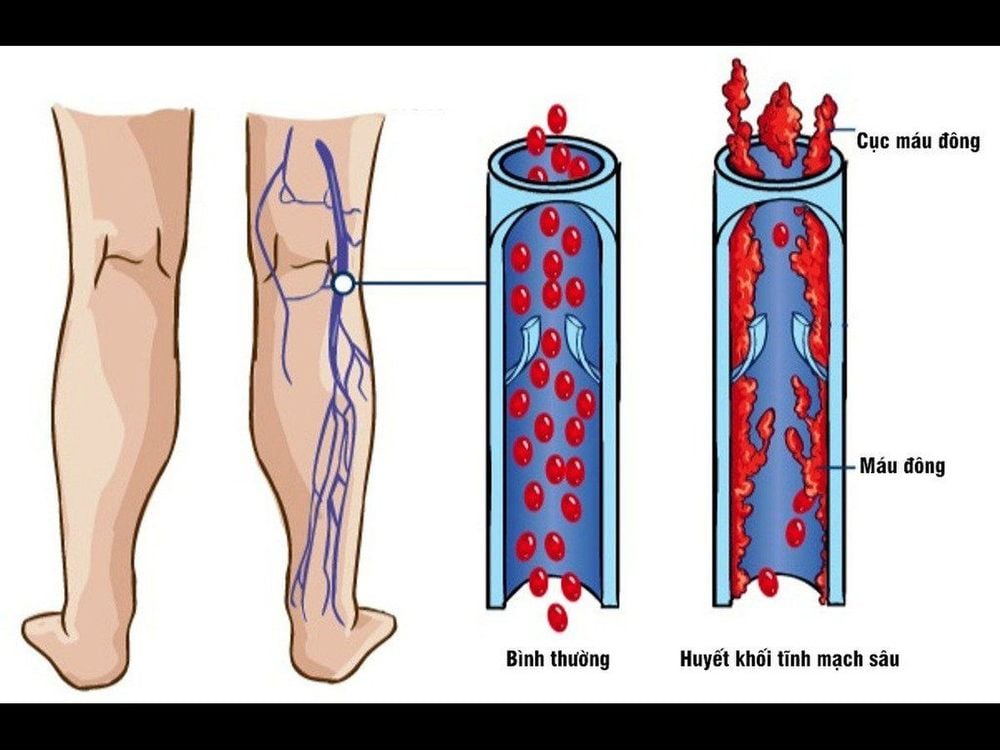
Trong điều trị sưng mạch máu ở tay có trường hợp bệnh nhân bị huyết khối tĩnh mạch sâu cần phải sử dụng thuốc chống đông máu
3. Prevention of swelling of blood vessels in the hands
To prevent swelling of blood vessels in the hands, you should note the following:
Exercise regularly and in moderation, do not focus on one part that causes imbalance but exercise the whole body; Get in the habit of wearing loose-fitting clothes, don't press your hands when sleeping; Regular health check-ups; Add foods like: Avocados, beets, asparagus, cherries, apples, buckwheat and other rutin-rich foods for anti-inflammatory, antioxidant and help prevent blood clotting. In summary, more prominent veins can be attributed to hot temperatures, exercise, tight clothing, and sun damage. In most cases, their appearance on the hands is a cosmetic problem or a medical condition such as vascular disease. Therefore, you should see a doctor if you notice swelling of the blood vessels in your hand that does not go away for a long time or is accompanied by other unusual symptoms.
Please dial HOTLINE for more information or register for an appointment HERE. Download MyVinmec app to make appointments faster and to manage your bookings easily.
References: veinreliever.com, varicoseveins.or, healthline.com





